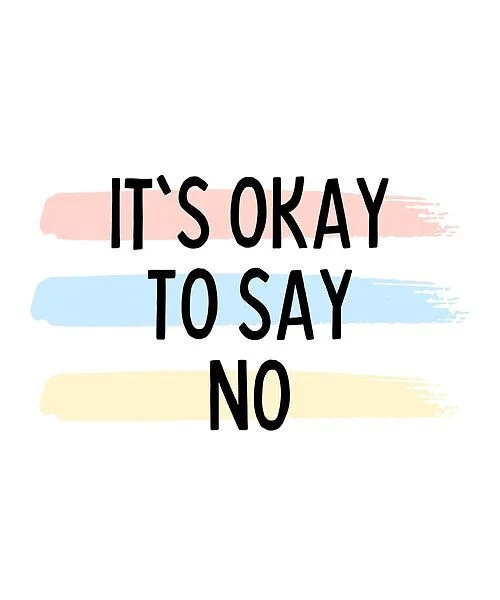Update: This article was last updated on 20th February 2024 to reflect the accuracy and up-to-date information on the page.

Parenting is an amazing journey that involves loving, nurturing, guiding, teaching, and helping children develop the necessary skills. It’s also about nurturing kind and responsible children. A big part of this is setting clear, fair rules, which is teaching kids about boundaries.
Setting boundaries helps children develop self-control, appropriate social conduct, coping mechanisms, and how to stay safe. In this blog, we’ll explore why teaching kids about boundaries are so important.

Source: Pinterest
| S.No. | Table Of Contents |
|---|---|
| 1. | Understanding Boundaries |
| 2. | Why do Boundaries Matter? |
| 3. | Types Of Boundaries |
| 4. | How to Establish Boundaries? |
| 5. | Teaching Children Healthy Boundaries |
| 6. | Navigating Challenges and Pushbacks |
Understanding Boundaries
Boundaries are like helpful guidelines that show children how to navigate the world around them. They come in many forms – from physical space to emotional limits and even how we manage our time. Boundaries teach kids about social norms such as social behavior which is crucial when they start preschool. Knowing these differences helps in setting the right rules that match your child’s age and growth.
Why Do Boundaries Matter?

Setting boundaries isn’t just about rules; it’s about teaching a variety of life skills, including perseverance and problem-solving, accountability and self-control, resourcefulness and the capacity for good decision-making.
In the long term, their capacity to negotiate limits enables them to say no to something that is not favorable for them.
When we set healthy boundaries, we also help our kids learn to respect their own feelings and needs. This sets them up for building strong, kind relationships both now and in the future.
Types of Boundaries
When teaching your kids about boundaries, it’s important to understand that there are various types. Let’s explore them:
Material
Material boundaries are about how we handle money and belongings. Children should learn to respect their resources and others too. If conveyed in the right manner, little kids start learning about this and implement it while sharing toys or using others’ things.
Physical
Physical boundaries are about personal space and touch. Kids should know they have a say in who touches them. You can help by not making them hug or kiss if they don’t want to. Everyone has the right to say ‘no’ to any form of physical contact.
Mental
Mental boundaries help us have our own thoughts and opinions. It’s like having your own ideas and feeling sure about them. It’s good to have opinions, but being too stuck in them can make it hard to change.
Emotional
Children who have emotional boundaries are better able to understand their own and others’ feelings. They learn to respect their own and other people’s emotions.
They also learn to separate their emotions from those of others. For instance, they learn to refrain from blaming other people for how they feel and from adopting other’s emotions as their own.
It’s important to express emotions independently.
How to Establish Boundaries?
Effective communication is the cornerstone of boundary-setting. As a parent, it’s crucial to express your expectations clearly and consistently. This creates a safe and predictable environment for our children to thrive.
Remember, boundaries should be adaptable and tailored to your child’s unique personality and developmental milestones.
Teaching children healthy boundaries
1. Teaching Respect through Boundaries
Respect is like the foundation of good relationships, and it starts with boundaries. Educate your youngster on the value of respecting other people’s privacy and providing them space. Teach children to consider other people’s feelings and to ask permission before touching anything that doesn’t belong to them.
Practice what you preach. By respecting their boundaries, you build trust and offer a cozy, caring environment.
2. Set a good example
Teaching kids about healthy boundaries is best done by showing them. Think about your own boundaries. Are you clear about what you’re okay with and what you’re not? Do you talk with your kids when you need to set a boundary?
It’s a good idea to check in with yourself sometimes. Make sure your boundaries are strong and your kids will learn from your example as they get older.
3. Emphasize Confidence and Emotional Intelligence
Setting healthy boundaries means being certain about your ideas, needs, and desires. It helps children understand their own limitations and what makes them feel happy or triggers sorrow or unhappiness. It is crucial for a child’s emotional development.
You can help by talking about feelings. Use words that fit their age and ask them to share their feelings without feeling bad about it. When they’re older, you can ask questions that help them understand why they feel the way they do. Start with questions like:
- How did that make you feel?
- Why do you think you felt that way?
- Would you do anything differently next time?
4. Teach them it’s okay to say ‘No’

Learning to say ‘no’ is an important skill for every child. It helps them protect their personal boundaries. Saying ‘no’ can be used in different situations, like not giving money, not taking blame when it’s not deserved, or when they need their own space.
Even though saying ‘no’ is simple, it might feel strange at first. So, it’s good to practice with your child. Talk about different situations, like saying no to a hug or to pressure from friends. Let them know that a clear ‘no’ is enough.
While practicing, also talk about how to handle it when someone else says ‘no’ to them. This helps them understand both sides. They’ll see that it’s important to respect someone else’s ‘no,’ and this will give them confidence to use their own ‘no’ when they need to.
Navigating Challenges and Pushback
Just like when you learn something new, there might be some tricky parts. Children are curious and like to test things out, so they might try to see how far they can go. It’s important for you to stay calm and steady in your answers. If needed, you can make some changes as per your child’s needs.
Conclusion
Teaching children about boundaries is like giving them a special present. It helps them feel good about themselves, make good friends, and be responsible. As a parent, you can make a big difference in your child’s future by showing them how to respect others and be responsible through setting boundaries.
Moonpreneur is on a mission to educate and ignite the flames of entrepreneurship through our holistically created online STEM programs, which will help kids master the futuristic sciences such as Robotics, Game Development, App Development, Advanced Math, and much more!!
Register for a free 60-minute robotics and Coding workshop today!















